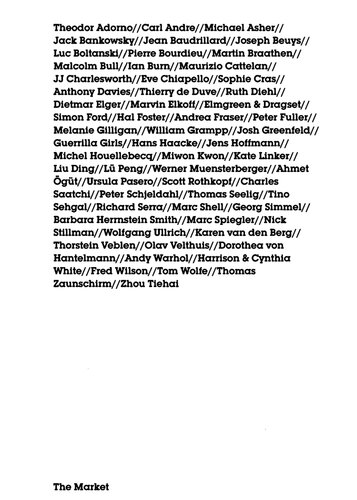

Most ebook files are in PDF format, so you can easily read them using various software such as Foxit Reader or directly on the Google Chrome browser.
Some ebook files are released by publishers in other formats such as .awz, .mobi, .epub, .fb2, etc. You may need to install specific software to read these formats on mobile/PC, such as Calibre.
Please read the tutorial at this link: https://ebookbell.com/faq
We offer FREE conversion to the popular formats you request; however, this may take some time. Therefore, right after payment, please email us, and we will try to provide the service as quickly as possible.
For some exceptional file formats or broken links (if any), please refrain from opening any disputes. Instead, email us first, and we will try to assist within a maximum of 6 hours.
EbookBell Team

5.0
20 reviewsTransnational markets hold sway over all aspects of contemporary culture, and that has transformed the environment of recent art, blurring the previously discrete realms of price and value, capital and creativity. Artists have responded not only critically but imaginatively to the many issues this raises, including the treatment of artworks as analogous to capital goods, the assertion that art's value is best measured by the market, and the notion that art and money share an internal logic. Some artists have investigated the market's pressures on creative democracy, its ubiquity, vulgarity, and fetishizing force, while others have embraced the creative possibilities the market offers. And for a decade curators and theorists have speculated on the implications of this new symbiosis between art and money, cultural and economic value. Drawing on a wide range of interdisciplinary sources, in dialogue with artists' writings, this anthology traces the historic origins of these debates in different versions of modernism and surveys the relationships among art, value, and price; the evolution and influence of patronage; the actors and institutions of the art market; and the diversity of artistic practices that either criticize or embrace the conditions of the contemporary market.
Artists surveyed include
Carl Andre, Michael Asher, Fia Backström, Joseph Beuys, Ian Burn, Maurizio Cattelan, Elmgreen & Dragset, Andrea Fraser, Melanie Gilligan, Dan Graham, Guerrilla Girls, Andreas Gursky, Hans Haacke, Damien Hirst, Christian Jankowski, Yves Klein, Jeff Koons, Barbara Kruger, Louise Lawler, Les Levine, Liu Ding, Lee Lozano, Takashi Murakami, Ahmet Ögüt, Tino Sehgal, Richard Serra, Nedko Solakov, Andy Warhol, Fred Wilson and Zhou Tiehai.
Writers include
Theodor Adorno, Jack Bankowsky, Jean Baudrillard, Luc Boltanski, Pierre Bourdieu, Martin Braathen, Malcolm Bull, JJ Charlesworth, Eve Chiapello, Sophie Cras, Anthony Davies, Thierry de Duve, Marvin Elkoff, Simon Ford, Hal Foster, Peter Fuller, William Grampp, Josh Greenfeld, Michel Houellebecq, Miwon Kwon, Kate Linker, Lü Peng, Ursula Pasero, Scott Rothkopf, Peter Schjeldahl, Thomas Seelig, Marc Shell, Georg Simmel, Barbara Herrnstein Smith, Wolfgang Ullrich, Karen van den Berg, Thorstein Veblen, Olav Velthuis, Dorothea von Hantelmann, Tom Wolfe and Thomas Zaunschirm.